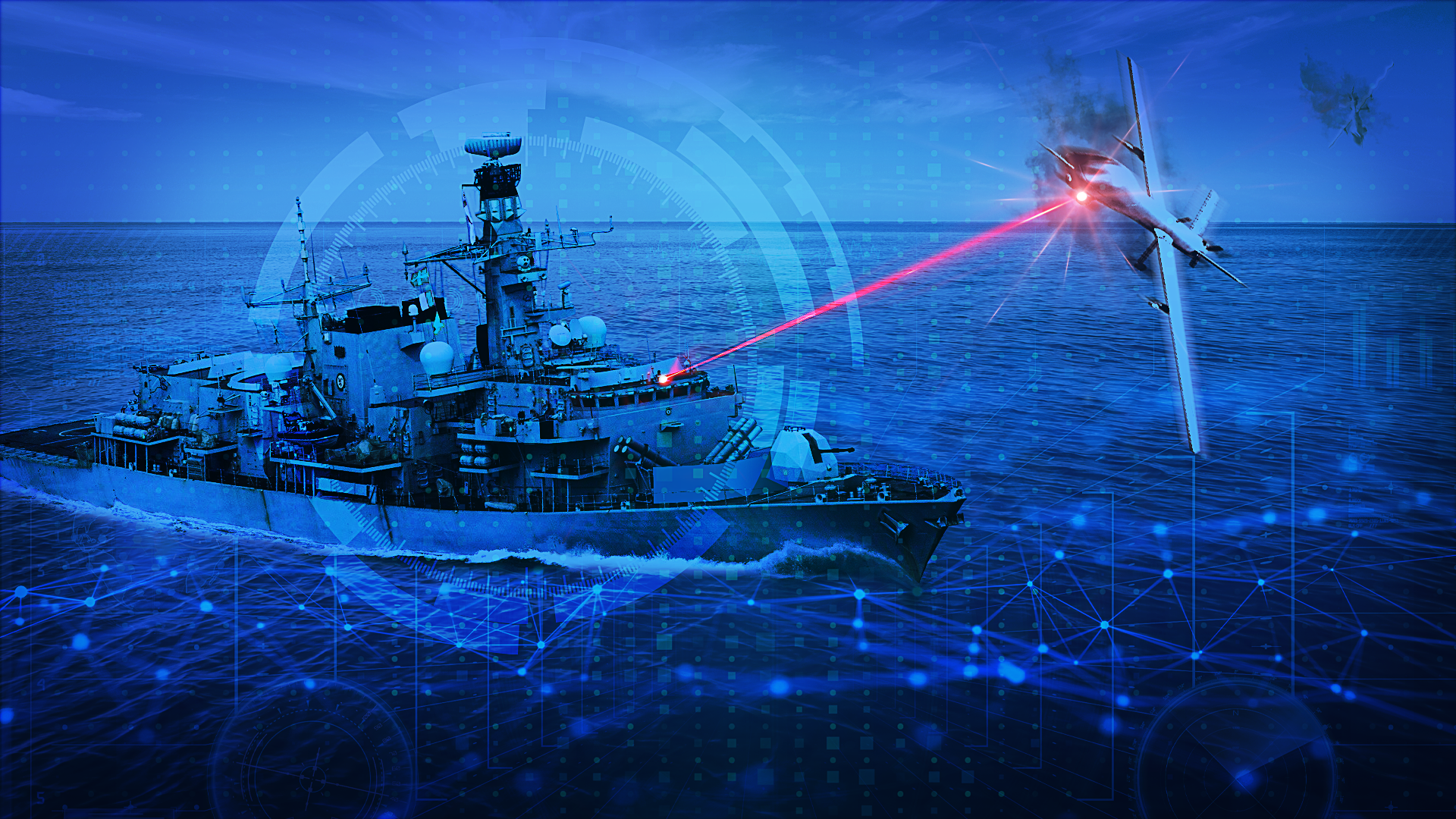
The UK is investing in new laser demonstrators. (UK MoD)
LONDON: The UK Ministry of Defence has awarded a series of four-year contracts to industry to explore Directed Energy Weapon (DEW) demonstrator technologies in land and maritime environments.
According to an announcement during the DSEI exhibition and conference in London, the MoD has picked three industry teams to split £72.5 million ($100 million) in funding in order to produce “advanced laser and radio frequency demonstrators” as part of the Novel Weapon Programme (NWP).
A Thales-led consortium has been selected to develop a laser weapon which will be integrated on board the Royal Navy’s Type 23 frigate to support counter-unmanned aerial system (cUAS) operations. This “Project Tracey” consortium also includes BAE Systems, Chess Dynamics, IPG and Vision4CE
Separately, Thales will also develop a radio frequency demonstrator mounted on board a MAN Support Vehicle which will be used to track targets across multiple domains. For this effort, Thales is teamed with Horiba Mira, QinetiQ and Teledyne e2v.
“The system will detect and track a variety of air, land and sea targets before delivering electromagnetic energy aimed at disrupting or damaging critical electronic components and processes in a target,” a Thales spokesperson confirmed to Breaking Defense.
Elsewhere, Raytheon UK also leads its own consortium to equip the British Army’s Wolfhound tactical ground vehicle with a laser weapon for cUAS and air defense. Partnering with Frazier Nash and NP Aerospace, Raytheon UK will provide the vehicle-based DEW for six months of experimentation, company sources confirmed.
Speaking to Breaking Defense at DSEI, Raytheon UK’s engineering director, Alex Rose-Parfitt, said the experiment would also focus on operations in adverse weather conditions.
The UK award is the second win in a month for Raytheon’s directed energy efforts, following its Aug. 18 selection for the US Army’s laser weapon solution as part of the Mobile Short Range Air Defense (M-SHORAD) requirement.
According to the MoD, all DEW solutions will undergo experimentation on board their respective host platforms between 2023 and 2025, with a focus on “operation and maintenance” to provide “invaluable knowledge, information and experience to assess whether DEW can be fully embedded on other defence assets in the future.”
“These next-generation technologies could revolutionise the battlefield and reduce the risk of collateral damage. The systems are powered by electricity and operate without ammunition, significantly reducing operating costs, increasing platform endurance and providing unprecedented offensive and defensive flexibility to personnel on the front line,” the MoD statement added.
The release quoted the UK MoD’s director for strategic programmes, Shimon Fhima, as saying directed energy systems have the potential to “revolutionise the future battlefield for our armed forces, enabling the prosecution of new targets in the land, sea and air domains and allowing commanders to meet mission objectives in new ways.”
All three experiments will report to Team Hersa, the MoD’s Centre of Excellence for Laser and RF DEW, which aims to better understand the environmental impact of the weapon systems. Team Hersa will be responsible for the delivery of the demonstrators and their integration on board air, land and maritime platforms.






















